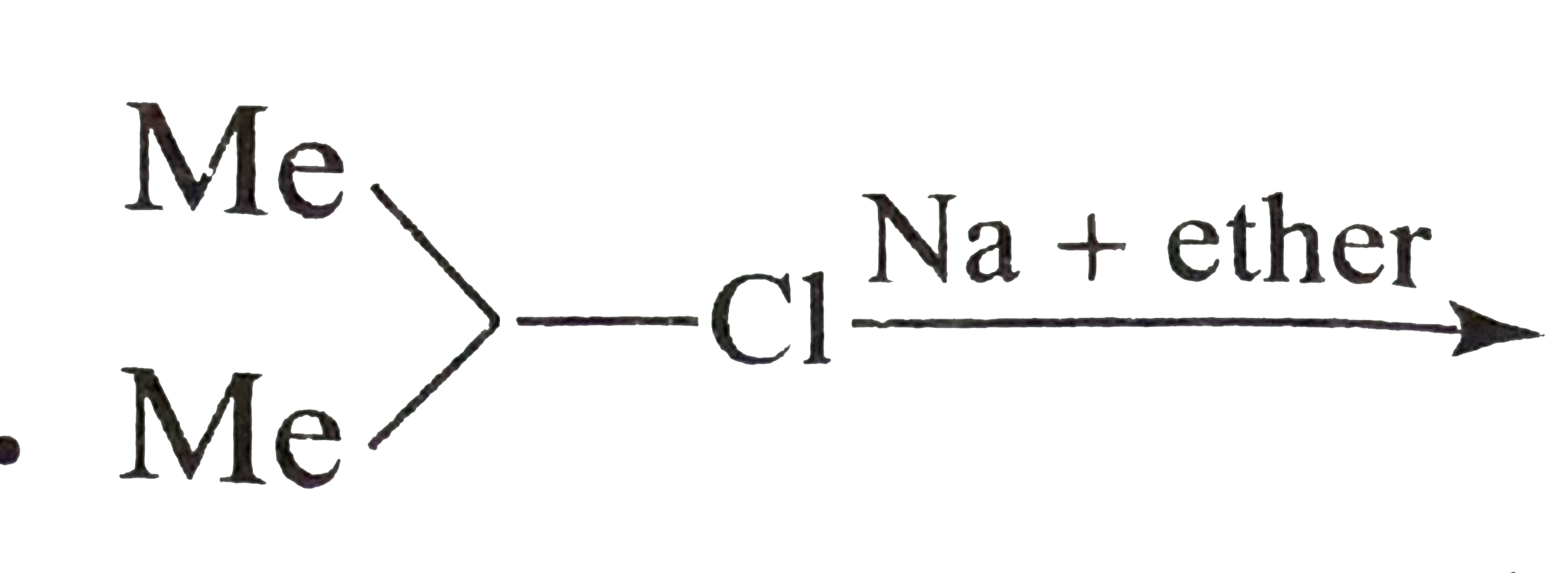PhCH2Claq. NaCN−−−−−→Catalytic hydrogenation−−−−−−−−−−−−−→(∪)
The final product (∪) is :
C6H5CH2CH2NH2
C6H5CH2CONH2
C6H5CH2NH2
C6H5CH2NHCH3
To solve the given question step by step, we will analyze the reactions involved and derive the final product.
Step 1: Identify the starting compound
The starting compound is PhCH₂Cl, which can be represented as a phenyl group (C₆H₅) attached to a CH₂ group that is further attached to a chlorine atom (Cl).
Step 2: Reaction with aqueous NaCN
When PhCH₂Cl is treated with aqueous NaCN, the cyanide ion (CN⁻) acts as a nucleophile. It attacks the carbon atom bonded to chlorine (the CH₂ group), leading to the displacement of the chlorine atom.
The reaction can be summarized as:
\( \text{PhCH}_2\text{Cl} + \text{NaCN} \rightarrow \text{PhCH}_2\text{C} \equiv \text{N} + \text{NaCl} \)
The product formed is PhCH₂C≡N, which is a nitrile (specifically, benzylnitrile).
Step 3: Catalytic hydrogenation
The next step involves catalytic hydrogenation of the nitrile group. Catalytic hydrogenation typically uses catalysts such as nickel, platinum, or palladium in the presence of hydrogen gas (H₂).
During this process, the triple bond in the nitrile is reduced to an amine:
\( \text{PhCH}_2\text{C} \equiv \text{N} + 2\text{H}_2 \xrightarrow{\text{Catalyst}} \text{PhCH}_2\text{CH}_2\text{NH}_2 \)
Step 4: Identify the final product
The final product after hydrogenation is PhCH₂CH₂NH₂, which can be represented as:
\( \text{C}_6\text{H}_5\text{CH}_2\text{CH}_2\text{NH}_2 \)
Conclusion
Thus, the final product (uu) is C₆H₅CH₂CH₂NH₂.
The starting compound is PhCH₂Cl, which can be represented as a phenyl group (C₆H₅) attached to a CH₂ group that is further attached to a chlorine atom (Cl).
When PhCH₂Cl is treated with aqueous NaCN, the cyanide ion (CN⁻) acts as a nucleophile. It attacks the carbon atom bonded to chlorine (the CH₂ group), leading to the displacement of the chlorine atom.
\( \text{PhCH}_2\text{Cl} + \text{NaCN} \rightarrow \text{PhCH}_2\text{C} \equiv \text{N} + \text{NaCl} \)
The next step involves catalytic hydrogenation of the nitrile group. Catalytic hydrogenation typically uses catalysts such as nickel, platinum, or palladium in the presence of hydrogen gas (H₂).
\( \text{PhCH}_2\text{C} \equiv \text{N} + 2\text{H}_2 \xrightarrow{\text{Catalyst}} \text{PhCH}_2\text{CH}_2\text{NH}_2 \)
The final product after hydrogenation is PhCH₂CH₂NH₂, which can be represented as:
\( \text{C}_6\text{H}_5\text{CH}_2\text{CH}_2\text{NH}_2 \)
Thus, the final product (uu) is C₆H₅CH₂CH₂NH₂.
Similar Questions
Consider the following sequence of reaction
The final product (Q) isPh−NO2Sn/HCl−−−−→(X)NaNO2/HCl−−−−−−−→PCuBr/HBr−−−−−−→(Q) The final product (Q) is
View SolutionConsider the following sequence of reactions :
C6H5CH3Cl2−−→p−ClC6H4CH3NBS−−→(X)Mg−−→(Y)(i)ethylene oxide−−−−−−−−−−→(Z)
Final product (Z) is
View Solution
Knowledge Check
In the following sequence :
CH3CH2ClNaCN−−−→(i)Ni/H2−−−→(ii)acetic anhydride−−−−−−−−−→(iii), Product (iii) is :ACH3CH2CH2NH2BCH3CH2CH2CONHCH3CCH3CH2CH2NHCOCH3DCH3CH2CH2CONHCOCH3C8H8Cl2(A)Aq. NaoH−−−−−→(B)Mild reduction−−−−−−−−→(C)l2/NaOH−−−−−→iodoform + acid salt(D)
APhCOCH3BPhCH(OH)CH3CPhCOONaDPhC(Cl)2CH3
H−C≡C−HHgSO4−−−−−−→H2SO4dil.NaOH−−−−−→Δ−−→P. The final product P is
View Solution (B)2mol−−−−−−→Cl2+hv (C)2mol−−−−−−−−→Alc.KOH
(B)2mol−−−−−−→Cl2+hv (C)2mol−−−−−−−−→Alc.KOH
(D) CH2=CH2−−−−−−−→Δ (E)
The final product (E) is :
View SolutionCH3CH2CHCl2Aq.KOH−−−−−→?
View SolutionIn the reaction
CH3COOHLiAlH4−−−→(A)I2+NaOH−−−−−−→(B)Ag(Dust)−−−−−→(C), the final product C is:-
View SolutionCaC2+H2O→(P)Red hot Fe Tube−−−−−−−−−→(Q)Conc.HNO3+Conc.H2SO4−−−−−−−−−−−−−−−−−→(R)
Final product (R) is :
View Solution Me−≡−HNaNH2−−−−−−→+liq.NH3 (C ) H3O⊕−−−→ (D)
Me−≡−HNaNH2−−−−−−→+liq.NH3 (C ) H3O⊕−−−→ (D)
the final product (D) is:
View Solution
